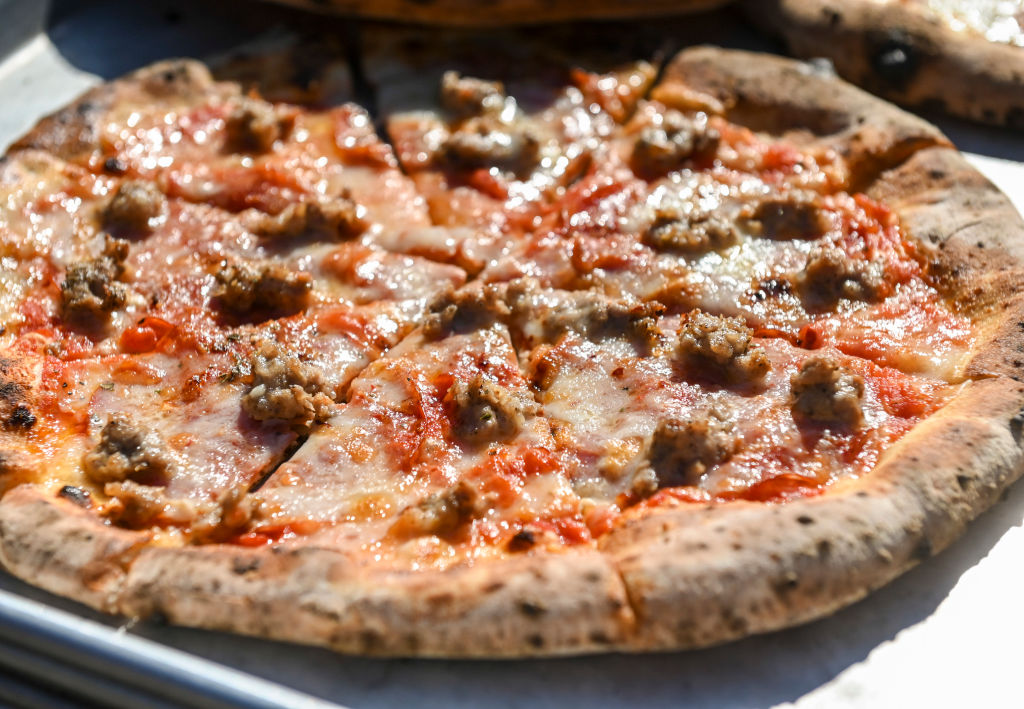Pizza restaurants in New York City using coal- or wood-fired ovens must reduce their emissions by 75 percent, according to new guidelines drafted by the city’s environmental protection agency.
“All New Yorkers deserve to breathe healthy air and wood and coal-fired stoves are among the largest contributors of harmful pollutants in neighborhoods with poor air quality,” Ted Timbers, spokesman for the New York City Department of Environmental Protection, said in a Sunday statement shared with the New York Post.
“This common-sense rule, developed with restaurant and environmental justice groups, requires a professional review of whether installing emission controls is feasible,” Timbers said.
Pizzeria owners, under the new rules, could be forced to purchase expensive emission-control devices for ovens that were installed before May 2016, the Post reported.
The rule specifically requires pizza joints using coal- and wood-burning ovens to hire an engineer or architect to assess the feasibility of installing emission control devices that could lower emissions by 75 percent in the restaurant, the report said.
If the expert assessment determines that a 75 percent emission reduction would be impossible in a particular restaurant, its owners would be required to find ways they could slash emissions by a minimum of 25 percent.
Should that be impossible, they must explain why, the Post reported. The rules allow for hardship waivers, according to the outlet.
“Oh yeah, it’s a big expense!” Paul Giannone, owner of Paulie Gee’s in Brooklyn’s Greenpoint neighborhood, told the Post, referring to the $20,000 air-filtration system he had installed in his restaurant in anticipation of the new rules.
“It’s not just the expense of having it installed, it’s the maintenance. I got to pay somebody to do it, to go up there every couple of weeks and hose it down and you know do the maintenance,” Giannone said.
Despite the expense, installing the system has had some positive externalities, he told the outlet.
“My neighbors are much happier. I had a guy coming in for years complaining that the smoke was, you know, going right into his apartment, and I haven’t seen him since I got the scrubber installed,” he said.
A source in the city government told the Post that “under 100 restaurants” would be affected by the new rules.
Coal- and wood-burning ovens have been traditional tools for cooking pizzas in the city, providing a crispier and charry taste.
“This is an unfunded mandate and it’s going to cost us a fortune not to mention ruining the taste of the pizza totally destroying the product,” an anonymous pizza restaurant owner told the Post.
“If you f*** around with the temperature in the oven, you change the taste. That pipe, that chimney, it’s that size to create the perfect updraft, keeps the temp perfect, it’s an art as much as a science,” he said. “You take away the char, the thing that makes the pizza taste great, you kill it.”
The restaurant owner said negotiations are going on between restaurateurs and city officials over grandfathering in or providing exemptions for existing coal- and wood-burning oven pizza restaurants, the Post reported.
According to city officials, the rules were made in consultation with an advisory board that included restaurant owners.
Implementation was delayed by COVID-19, and challenges remain in putting the rules into effect, the report said.
“The advisory committee and DEP were unable to finalize a rule in that time frame due to the difficulty of crafting a rule to manage technical and cost concerns that are attendant to the installation of emission control devices,” city officials told the Post.
“For example, costs for controls for existing cook stoves can be difficult to manage as the spaces in which these cook stoves operate are often aging structures that were not designed to accommodate emission control devices,” the officials told the outlet.
“In addition, many of the locations where existing cook stoves are used are not owned by the operators of the cook stoves, and changes required to install such devices require obtaining the landlord’s permission.”
This article appeared originally on The Western Journal.

























 Continue with Google
Continue with Google